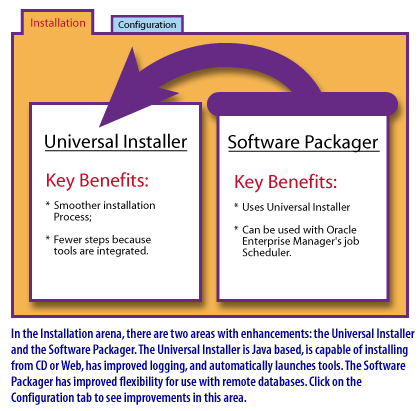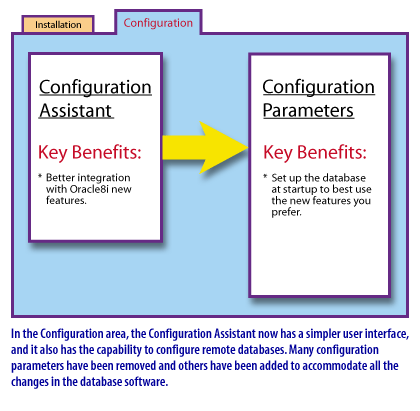Oracle Install, Config, Migrate
Universal Installer
There is an ongoing debate about the benefits of adding objects into database management. For years, a small group of object-oriented technologists discussed the object revolution with enthusiasm.
However, object-oriented databases did not appear in the mainstream until the major relational database vendors made a commitment to incorporate objects into their relational engines. Now that object-relational databases have become a reality, Oracle developers try to understand how Oracle's new object extensions are going to change their lives.
Oracle Corporations commitment to objects is very real, and Oracle's exciting new extensions are going to create the new foundation for database systems of the 21st century.
When I first glanced at the Oracle documentation, the object extensions seemed mundane. The new features essentially consist of
However, object-oriented databases did not appear in the mainstream until the major relational database vendors made a commitment to incorporate objects into their relational engines. Now that object-relational databases have become a reality, Oracle developers try to understand how Oracle's new object extensions are going to change their lives.
Oracle Corporations commitment to objects is very real, and Oracle's exciting new extensions are going to create the new foundation for database systems of the 21st century.
When I first glanced at the Oracle documentation, the object extensions seemed mundane. The new features essentially consist of
- user-defined datatypes,
- pointers to rows, and
- the ability to couple data with behavior using methods.

- 1) Smoother installation process
- 2) Fewer steps because tools are integrated
In the installation arena, there are 2 areas with enhancements:
- The Universal Installer and
- the Software Packager.
The Universal Installer is Java based, is capable of installing from CD or Web, has improved logging and automatically launches tools.
The Software Packager has improved flexibility for use with remote databse.
Software Packager - Key Benefits: 1) Uses Universal Installer, 2) Can be used with Oracle Enterprise Manager's job scheduler.
